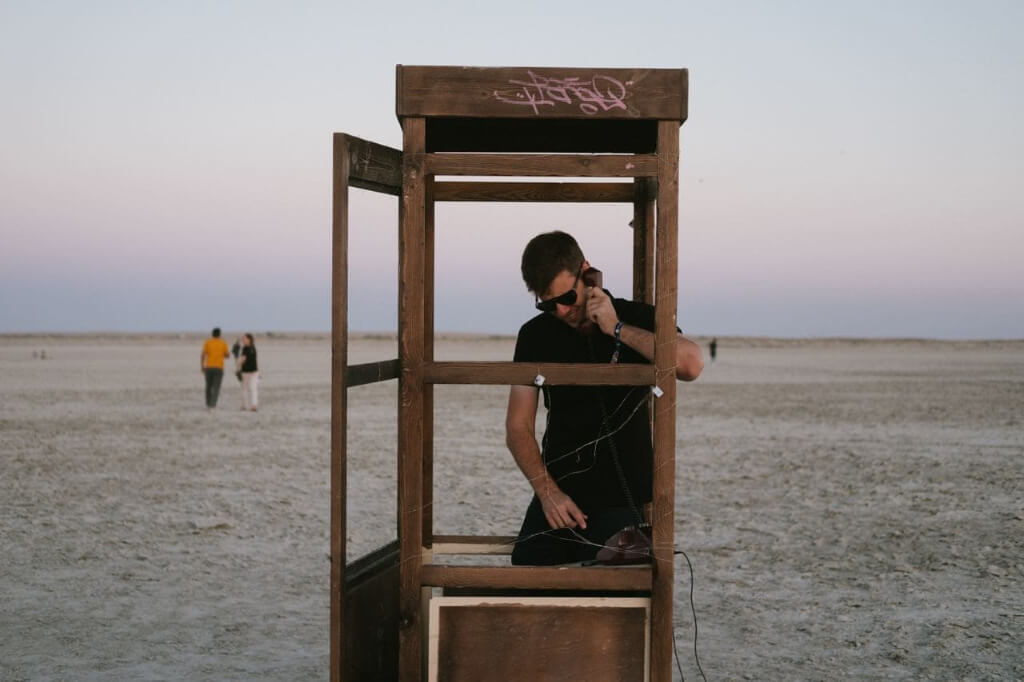
Author: Otabek Suleymanov
We receive energy through strong emotions. A connection to the past. A connection with the lost.
Sometimes a person needs to speak out, to let go.
Calling Nowhere is a good illustration of the process of forgiveness and nostalgia.
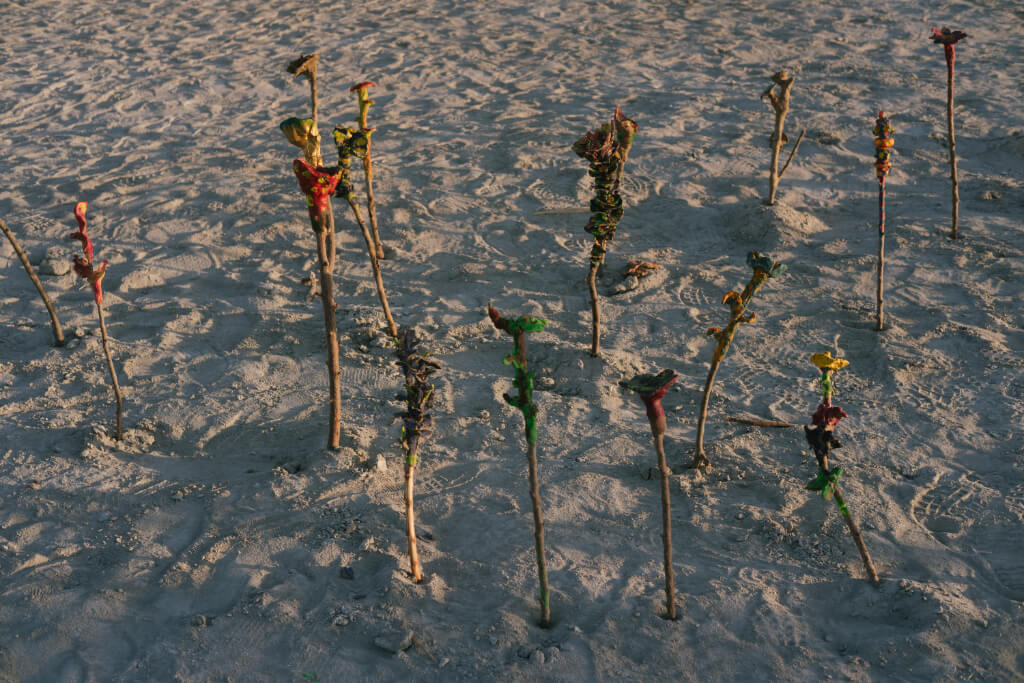
Author: Askar Urmanov
Executions: Askar Urmanov, Victoriya Khalilova
What could be more useless than a flower? What could be more useless than a flower made of clay, planted in the desert? What could be more pointless than our search for meaning and our desire to leave our mark on the earth?
Knead the clay, mold the flower, plant it in the sand. Gently nurture it, put all your love into it, breathe life into it. Give it the gift of freedom – leave it all alone in the desert and go away.
Come back in a year. See? It crumbled into ashes, and its very ashes were blown away by the wind. The world didn’t see, the world didn’t touch, the world didn’t know.
No financial gain. No proof of status. No benefit. The pure joy of creating “for no reason”
For no reason – a flower, for no reason – life, for no reason – death, for no reason – blossoming gardens – in the eye, in the memory, in the heart of the universe.
“For no reason” is the very “Zing”, the very “Unmotivated Acts of Beauty”, the very “Doors of Perception”.
Energy fills your stem, your roots, your leaves, your bud and returns to the cosmos.
Nonsense! Stupidity! What a fool you are!
A fool. A fool is a gardener.
Now dance!
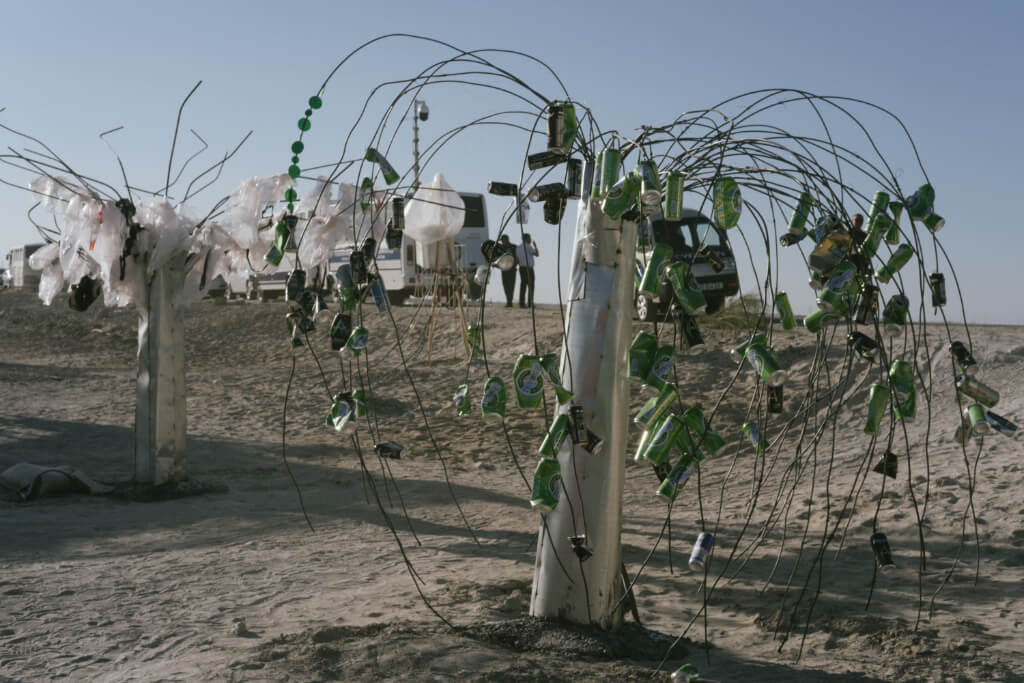
Qizlar
Superstitious people make a wish and tie pieces of cloth and wet napkins to the branches of trees, hoping to heal, fulfill a wish or just “as a memento”. Over time, the cloth turns to rags and “chokes” the trees.
In 3 days you will see the damage we are doing to nature.
What grows in the grove?
Chinara is a natural “filter” of the city – it cleans the air from dust and dirt, gives coolness, serves as protection from the scorching sun.
Tie a used bag or a wet napkin on the “branch” of the tree.
The poplar tree is a symbol of freshness and youth, as well as our “shield” from strong winds and dust storms.
Punch a hole in a used bottle and “stick” it on a branch.
Willow is our natural “doctor” and its bark is used to make medicines and decoctions.
Hang your drink cans by their hooks.
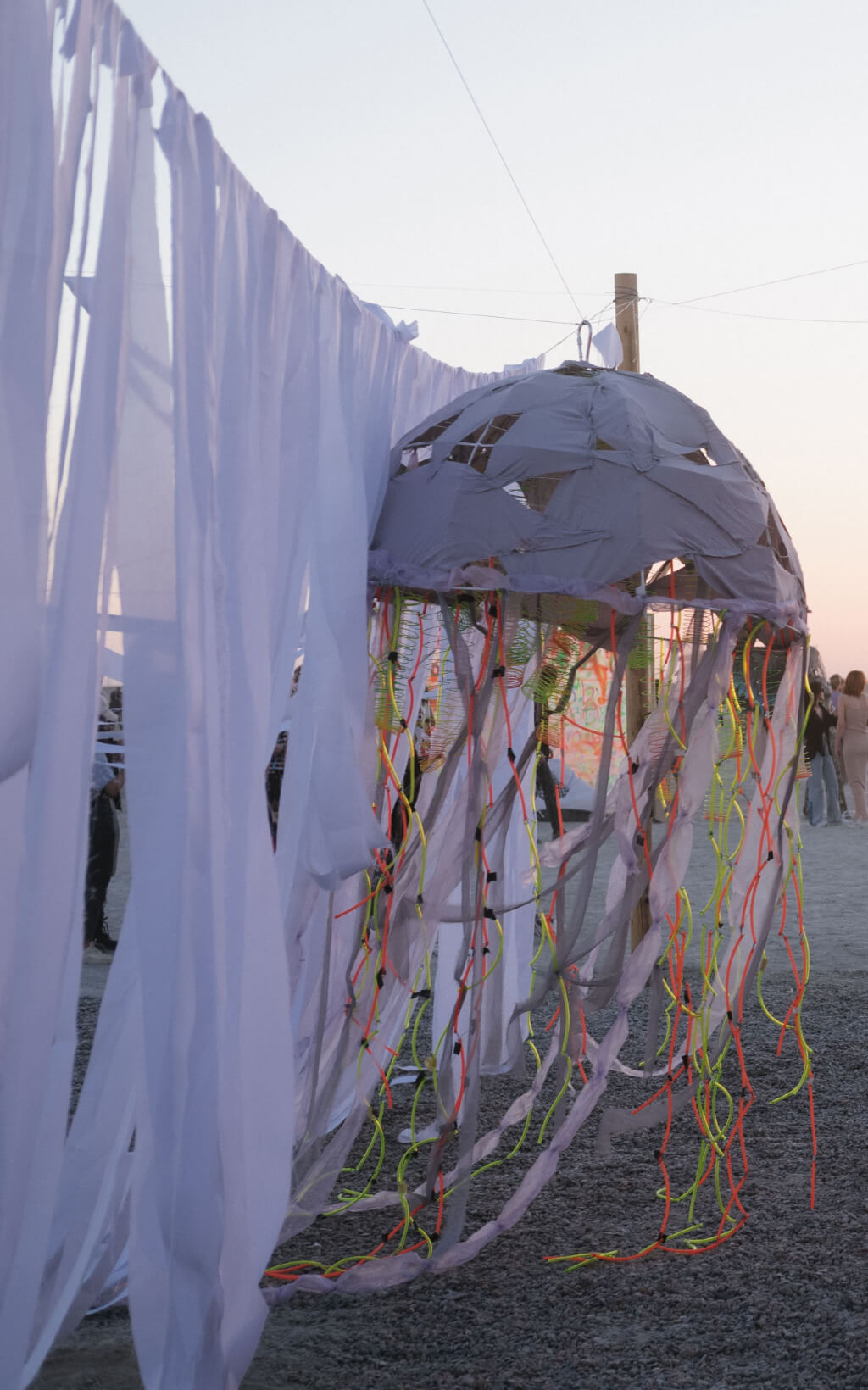
Mirshod Kamolov
In the town of Muynak there is a place called “Graveyard of Ships”, where the ghosts of ships and sea animals that once lived there dwell. In 2009, when the sea finally dried up, these souls wandered for a long time on the cracked earth that used to be the bottom of the Aral Sea. They searched for the voices of sailors and the sound of the waves.
In 2018, the souls were saved from their loneliness. Now people play music from all over the world at this site. It is now a tradition for these souls to visit the festival every year and listen to the long-forgotten noise of the sea they longed for, but in a new form.
And this year, according to the old tradition, they wanted to give a blessing and sent some ghosts.
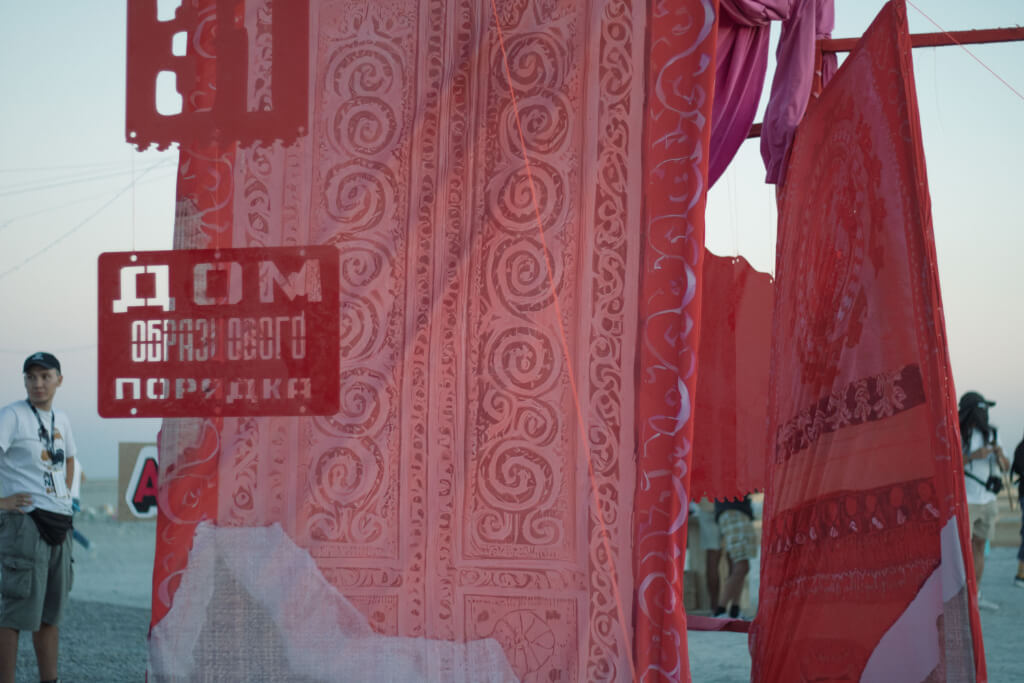
Author: Aziza Kadyri
This installation is a new offshoot of the 9 Moons project, in which Aziza Kadyri explores the stories of the women of her family. This project was inspired by the desire to “restore” her great-grandmother Oybibi’s lost dowry – a huge embroidery of the suzane of the Jizak school depicting the 9 “moons”. Embroidery and textiles became a way of visually recreating the images that accompany the almost mythologized stories of women, which do not exist in the record but are always present in conversations over a cup of tea.
Grandmother H., Oybibi’s daughter, always had a passionate desire to become a dancer and devote herself to the arts. She performed with Batyr Zakirov even before his fame. However, Oybibi could not allow her eldest daughter to engage in “non-serious” disciplines – primarily because, in her opinion, it would not lead to a successful marriage. H. abandoned her dream of dancing and entered the textile industry in the 1950s. Despite her limitations, she continued to live her life as if under the spotlight: with access to the latest fabrics and designs in the Soviet shortage, she dazzled everyone around her with the latest fashions.
Her Stage takes the viewer into the current space of grandmother H. This space is more of a mental space that holds the secrets of one woman’s aspirations. We see details reminiscent of a living room: doors, a Soviet-style trellis, a stack of korpachas in the corner, but all these are just simulacra transferred onto fabric. All the elements of the installation depict elusive, blurred images reinterpreted by a neural network that the artist has trained on suzani images.
This space can also be seen as a scenography: a set on a stage on which a performance never took place. The trellis suddenly becomes part of the dressing room, the fabrics become backstage, the old chairs become the auditorium. In an atmosphere that oscillates between nostalgia and potential, between the everyday and the performative, a bridge is created that connects generations.
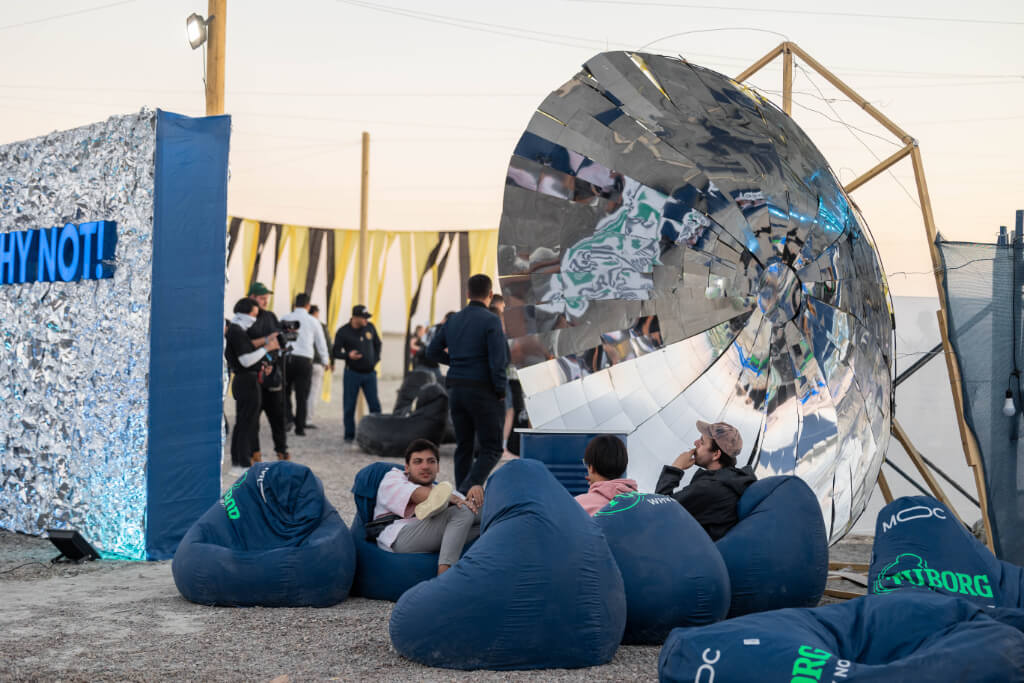
Author: Mirshod Kamolov
Look inside, look at the most precious contents of our planet. It is you. The universe loves you. And all your surroundings in the face of small reflections of you also love you. It’s all you! Imagine how huge your inner world is.
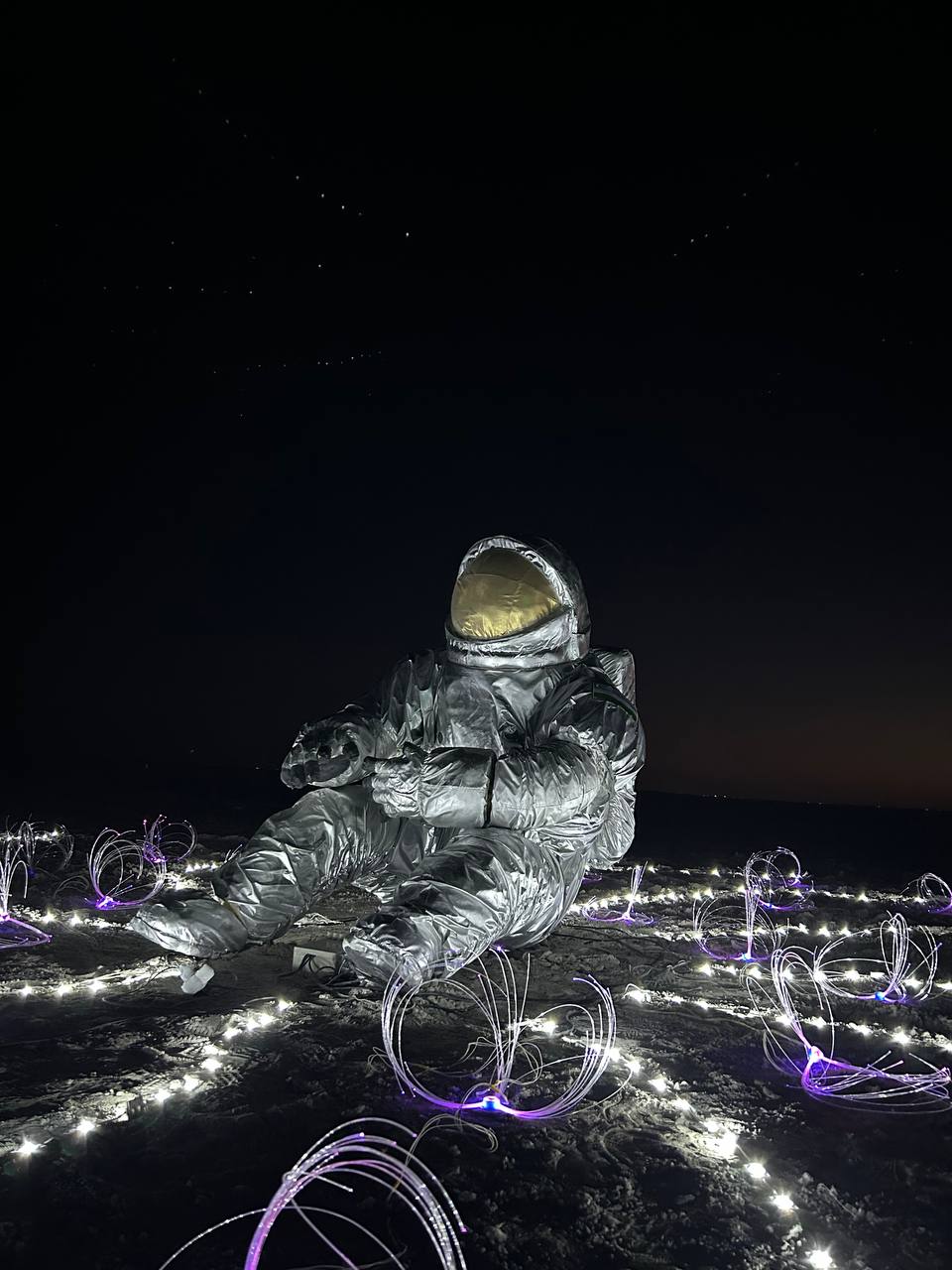
Author: Otabek Suleymanov
Executions: Otabek Suleymanov, Kamilla Muminova, Azamkhon Azizov, Sitora Rozybakieva, Ilnur Iksanov
The energy of peace. An astronaut who is used to wild overloads (who has been to Muynak), who is in eternal search, who wanders between worlds, finds energy by returning to the place of the element of peace. As if asleep at Armageddon, he is cut off from all vanity and stores up energy for future travels.
An embodied symbol of exploration and unlimited human possibilities, the astronaut will act as a trusted guide to thoughts of the future. His stories of human inspiration, courage and the pursuit of the impossible will inspire festival-goers not only to immerse themselves in the world of music, but also to think about what they themselves can achieve on this vast cosmic journey of life.
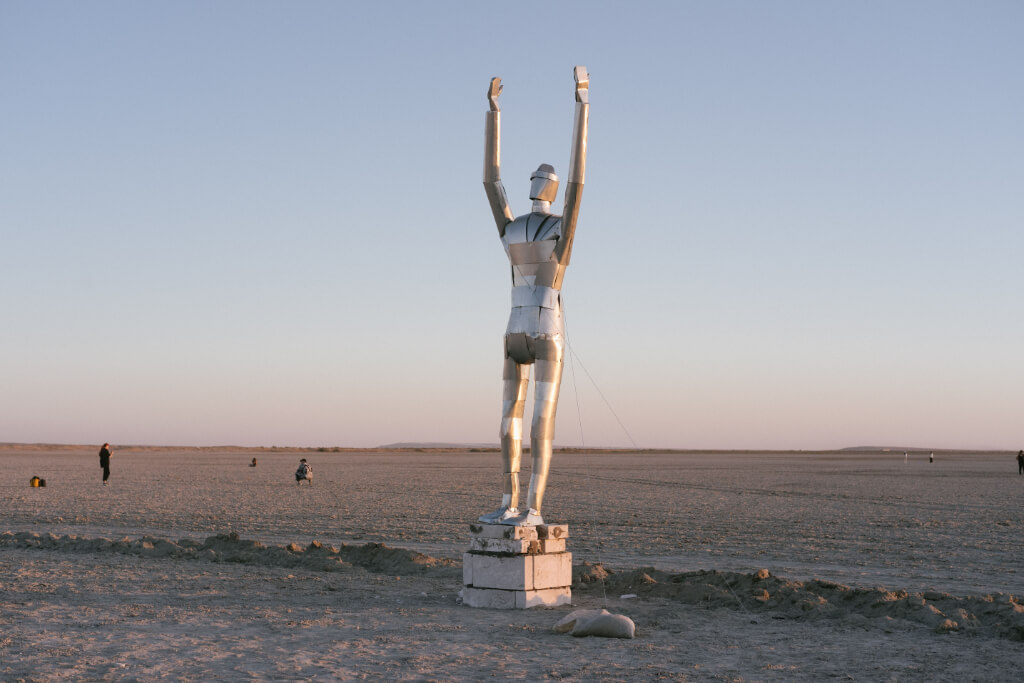
Author: Mirshod Kamolov
Do you believe that our DNA stores in itself all the information of many millions of civilization? Unfortunately, on the way of its formation Human with all the benefits of the universe also acquired many traumas – physical and psychological, saw all the monstrosity of wars and destruction. Today we can send unnecessary information far into space. It will be a small step to purity of our planet from negativity. We can also send our gratitude to the Universe, tell about our experiences or share our impressions about the festival. And the universe will determine by itself, what will fly in the spaceless dimension until it finds its addressee, and what will be forever absorbed by black holes.
This installation at the Stihia Festival is an allegory of our connection to nature and the cosmos. At the beginning of the festival, a DNA-shaped wooden shell will be built as a symbol of life and the interconnectedness of all things. At the end of the festival it will be burned, symbolizing the return of cosmic energy back into the universe. Inside this shell is an iron man raising his hands upwards as a sign that our energy is directed into the cosmos, maintaining the harmony of the universe.
